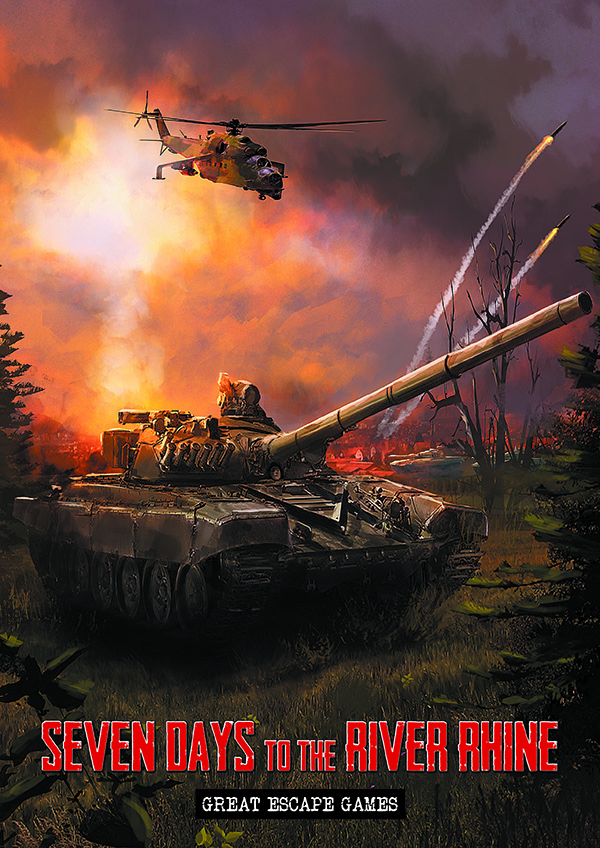
Last night at the club we played our first game of Seven Days to the River Rhine (7DTTRR). This is a new version of Iron Cross designed for the Cold War in the 1980s, which I (and gaming colleague Terry) also bought at Salute. Though the game is designed with 15mm miniatures in mind, we used our usual 6mm models, but kept the distances unchanged.
In our scenario we had a Soviet attack with T72s and infantry support on a hamlet held by British with Challenger I tanks. The Soviets had a 2:1 superiority in tanks, but less for infantry, but a concealed approach. We didn’t play helicopters in this introductory game.
So how did the rules play? The rules managed to be both very close to IC and a big improvement. Some of the changes related to technology (missiles and helicopters for example), but mostly they are just cleaner. IC is a tangle of different rules for different types of weapon, mostly confusingly relegated to an appendix and kept out of the Quick Reference sheet. Now the categories are simplified and to-hit and damage throws simply presented in a table. The armour penetration rules are simplified (making them deadlier though), and all short-range effects come in at 12 inch range (rather than 6, 8 or 12). The rules on moving and firing have been cleaned up, so that the moving target deduction now applies just to reaction firing.
A further innovation is the use of cards to bring in such factors as off table artillery, electronic warfare, air strikes and so on in a random way. This is quite like the Battlegroup system, though that doesn’t use cards.
How about our game? We had one big issue. The Challenger’s frontal armour was pretty much invulnerable to any of the weapons that the Soviets had at their disposal. The side armour was hard enough. And there was no penetration benefit for short range (though it was easier to hit). It didn’t help that we didn’t play the rules quite correctly, in that hits by the Russians with most weapons would still have inflicted single morale marker, which would have reduced the effectiveness of the British forces. But it was clear that the soviets weren’t going to win, so we ended slightly early, putting it down to experience.
But the rules generally worked well, in spite of missing a few things (in addition to the single MMs for all hits theoretically capable of penetrating) we ignored the minimum range for ATGWs, and the restrictions for armour in the presence of infantry. The use of 6mm models with full distances worked fine. The rule writers do not admit to a distance scale, but if 12 inches is about 100m, as I suspect, then the ground and model scales are close to equal – a big bonus when buildings are part of the set-up, as they so often are.
The small tweaks to IC have ended up with a greatly improved set of rules. My plan now is to ditch my IC house rules, and adapt 7DTTRR to WW2. How to deal with the cards side of things will take a bit of thought, but mostly it looks straightforward.
Any chance you might share your WWII conversions? Would love to use my US and German forces for this.
Hi Fred. I’m in the middle of a house move right now, so things are a bit chaotic. I will publish my adaptation as soon as things settle down a bit. We tried it out once at the club. The system worked OK, but my fellow gamers have gone off the whole Iron Cross system. I will write a little more about that some time!
Any update on your WWII conversion of 7DTTRR? Enjoying the modern game but would also like to get out the WWII gear for these simple but engaging rules.
Sorry – got distracted! Uploaded on the rules page http://diningtablenapoleon.com/rules/